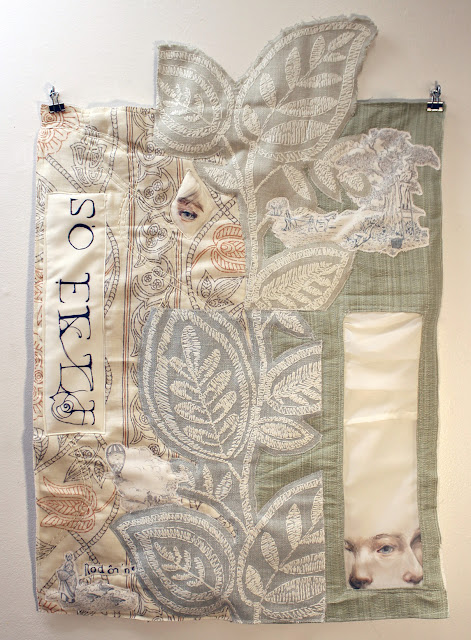Personal Project
 |
| Can You See the Future?, 2024 Sharpie, colored pencil, found fabric, wire |
Process
Artist Statement
I am a graphic design major, and like many artist-designers, I have always strived to create work that combines modern and traditional techniques. This piece is a continuation of that drive, specifically focused on the recent rise of AI technology. I started with a thesis paper I wrote on how previous technological paradigm shifts (such as the industrial revolution and the invention of the camera) affected the art world, and how they can be compared to the current shift (AI). I found that while AI may be able to create work that looks technically skilled, humans are still the ones with emotions and the capability to form actual lasting ideas that draw on our history. However, AI can still be a useful tool for artists and designers, so I sought to show that with this project.
My process was as follows: start by creating a piece of physical art, then transform it into digital art, use AI to further change it, and finally, translate the AI output(s) into a physical textile work. The goal was to create several different works that could stand on their own, but are also part of a series that illustrates this transformation and the conversation between modern and traditional methods.
I started with a charcoal self-portrait, since charcoal is a foundational drawing medium, and the human face is compelling, bringing up ideas about self-reflection, humans as artists, and our personal emotions and experiences. I then transformed the drawing digitally (as seen below), fed it into Midjourney, combining it with other verbal and visual prompts, then used found fabric to create a textile collage that represented different aspects of the AI images. For example, I used leaves as a representation of the AI's tree, as well as growth and change in general. I copied AI "words" (which are just gibberish) and included them in the work as a representation of the current state of AI and how it's not yet able to generate images of actual letters that make sense. I included textile images of 1800s motifs, to call back to the arts and crafts movement (a response to the industrial revolution), and finally, I drew sections of eyes from the AI images, some on sheer fabric, and cut out a "window" in the work to show how the sheer fabric lets light through.
The final textile work shows that while digital tools can be useful, they will still never replace traditional methods, as there are things you can do physically or by hand (such as the sheer panel, 3D eye diamond, and other textures in the work), that just aren't possible to experience through a screen.
Previous steps in the process

















Comments
Post a Comment